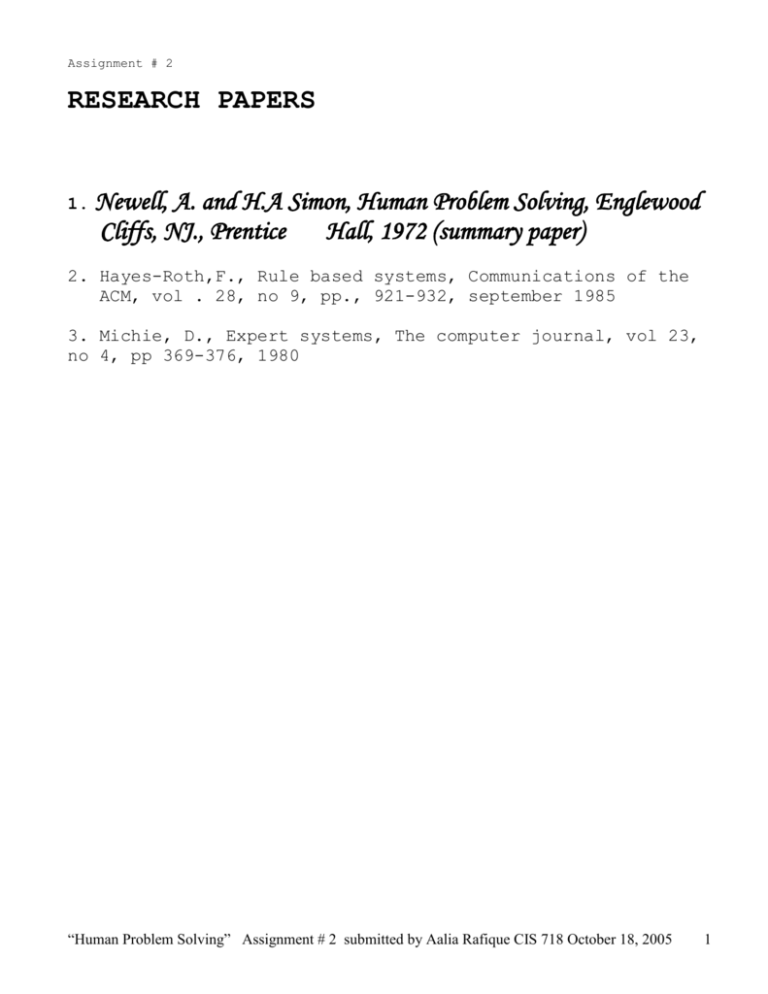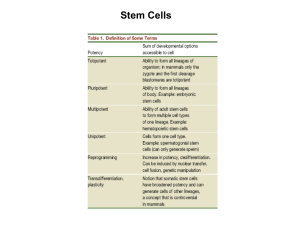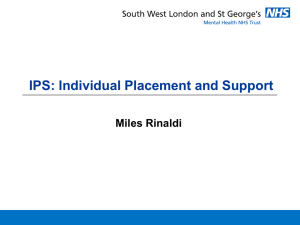Allen Newell & Herbert A. Simon - Computer and Information Science
advertisement

Assignment # 2 RESEARCH PAPERS 1. Newell, A. and H.A Simon, Human Problem Solving, Englewood Cliffs, NJ., Prentice Hall, 1972 (summary paper) 2. Hayes-Roth,F., Rule based systems, Communications of the ACM, vol . 28, no 9, pp., 921-932, september 1985 3. Michie, D., Expert systems, The computer journal, vol 23, no 4, pp 369-376, 1980 “Human Problem Solving” Assignment # 2 submitted by Aalia Rafique CIS 718 October 18, 2005 1 HUMAN PROBLEM SOLVING Allen Newell & Herbert A. Simon REFERENCES This project is an attempt to build the catalogue for Artificial Intelligence books. I would proudly say I used Internet as a least preferable source for getting information, although I know I could have found many more on internet. What I tried to do was to collect all books that exist in the CUNY (City University of NY) library database. So that it would make students and readers to know range of books that exist in CUNY and also provide them exact location to find those books. Other than that what I tried to do, was to get the reference books usually found at the end of each books as references. This was a much better source as it gave me the exact books related to the research topic. In this assignment I tried to avoid the duplication of records, if in case there exist one, I am sorry for that. Enjoy! Prof. Danny Kopec CIS 718 SSuubbm miitttteedd bbyy A a l i a Aalia R Raaffiiqquuee O Occttoobbeerr 1188,, 22000055 “Human Problem Solving” Assignment # 2 submitted by Aalia Rafique CIS 718 October 18, 2005 2 HUMAN PROBLEM SOLVING This research conducted by Allen Newell and Herbert A. Simon focuses mainly on the human thinking and information processing. Human system is considered, as a system constitute of many parts like sensory subsystems, memory, effectors, arousal subsystems, and so on. It shows many of the dimensions along which the total human system can vary. Mainly three issues are put under consideration in this research. These are: Task dimension Human behaves in different classes of situations. For example walks, talks, reads etc. Performance learning development dimensions By keeping the task environment control, one can distinguish in performing a task, earning a task, and developing a task. Individual difference dimensions Each person is a member of population. Every person differs systematically, unique genetic endowment and historical fate. This research has been studied in detail in this book by developing a discussion on Chess, symbolic logic and algebra like puzzles. These tasks are short, moderately difficult problems of symbolic nature. Research mostly dealt with the performance, and some learning but doesn’t deal with the development or differences related to age. It de-emphasizes the details of processing on the time scale of elementary reactions. Similarly long term integrated activities extending over periods or days or years receive no attention. It studies the performance of intelligent adults in culture. The main concern in this study is given to the integrated activities that constitute problem solving and ignores the perception, motor skills or personality variables. Or we can say that the human performance in problem solving is analyzed more rather than the learning capability. “Human Problem Solving” Assignment # 2 submitted by Aalia Rafique CIS 718 October 18, 2005 3 IPS (information processing system) Human dealing with different task, depending on the task environment and the problem space is called as the processor of information. This theory describes how does the man processes task oriented symbolic information. Information processing theory mainly describes the processes of human problem solving, characteristics of information system that carries out the processes and the nature of task environment in which the processes operate. The information processing system theory constitutes that: Human when engaged in problem solving are represented as information processing systems Substantial subject differences exist among programs, that involves the differences of problem structure, method and content Substantial task differences exist among programs, that involves differences of structure and content Task environment and intelligence of problem solver determines behavior of problem solver, independently of the detailed internal structure of information processing system Specific variations in the behavior by individuals and by tasks, and also the general predictability of intelligent behavior from the requirements of the task are the pervasive features of human behavior. This confronts all attempts to develop human psychology. According to this theory the four basic propositions for the information system are: A few and only a few characteristic of human IPS are invariant over tasks and problem solvers In human problem solving memory , processing , programs, retrieval time, etc are the main constitutes of information processing system. The invariants in human processing are: o Size, access characteristics and read and write times for the various memories in human IPS o Serial character of IP and the rate at which the elementary information processes can be performed o Production and goal character These invariants determine and affect the information processing in problem solving situation. In human information system Long-term memory (LTM) has infinite capacity of storing information. The smallest unit of memory in IPS is called as SYMBOL. LTM is referred as associative as it holds the symbols in a relative fashion. The retrieval time in LTM is more. Other kind of memory is the SHORT TERM MEMORY (STM). This has a limited capacity and less access time than LTM. During the IPS processes STM holds the symbols needed for the given instant of time. Information in STM is not permanent and decays with time. All processes take “Human Problem Solving” Assignment # 2 submitted by Aalia Rafique CIS 718 October 18, 2005 4 their inputs from STM and leave out puts in STM. The rate of processing depends on three main factors: Number of processes occurring simultaneously Time required for each processor Amount of work done by each processor Other than that the most important feature for the IPS is the presence of EXTERNAL MEMORY (EM). The processing of IPS with and without the EM possesses great difference. For an IPS to be successful and efficient it should posses an EM. The characteristics of IPS are sufficient to determine that a task environment is represented (in IPS) as a problem space, and that problem solving takes place as a problem spaces. For the problem solver to be efficient in decision problem space must have the enough knowledge about the task environment. Whenever a problem is approached, problem space must be created for it or retrieved from the memory. Problem spaces can be changed or modified during problem solving. Problem space is the place where the problem solving takes place. It contains not only the problem actual solution but also the possible solutions. In problem solving, processor not only searches for the exact solution but also to formulate the solution using the available information. The search involves the backup – that is , return from time to time to old knowledge states and hence the abandonment of knowledge state information. The structure of task environment determines the possible structures of problem space for every task a different kind of problem space is created. It means that the task environment can limit the problem space. The effectiveness and completion of any task depends on the structure of problem space. Problem space also reflects the aspects relevant to task environment. The structures of problem space determines the possible programs that can be used for problem solving In the problem space, usually problem solver has available repertory of such methods, which control his behavior under different conditions. During the task analysis and investigation of behavior of particular subject various methods are discovered. This allows the possibilities for behavior organization and permits us to drive consequences from one or the other method. Methods depend on the total situation other than the structure of problem space. Methods translate the information into the pattern of decisions. This section argues that the method is not a completely independent variable to be added some how to the specification of the task environment, the goals of the problem solver, and the selection of the problem space. Clearly it is partly independent; a range of methods and mixtures is available, and a “Human Problem Solving” Assignment # 2 submitted by Aalia Rafique CIS 718 October 18, 2005 5 problem solver need not use all these methods, of the best ones. Which methods he does use is partly a measure of his intelligence and education. But his choices are highly circumscribed. It is very difficult to compare the human behavior with the theory, as the human thinking is the dynamic, history dependent system. Throughout this study human intelligence is referred as the adaptive system that can shape them into environment. A system that is not flexible to meet the demands of environment is not adaptive. The feature of the adaptive information processing system that shows through deal with the kind of memories available to the IPS as characterized by memory size, rates of reading and writing and accessing modes. In general, computers, memory size, rates and ways of accessing determine the performance of system. The performance of computers is related to the flexibility of programs as it mediates between the detailed structure of computers and the structure of problem that is the situation to which it is to be adaptive. The characteristics of the human intelligence “ memory an processing rates” determine that the problem space is a major invariant of problem solving. Or we can say that all problem solving occurs in some problem space. It is not necessary therefore, that the information processing system ‘s with different characteristics from the human will solve problems in the same way and will employ the problem spaces to organize their efforts. Although the information processing system dictates that the problem solving shall take place in the same problem space, the task environment determines the structure of that space. Problem solving could be effective only if the significant information about the objective environment is encoded in the problem space where it can be used by the problem solver. But it is not necessary that all the relevant information in the task environment is reflected in the problem space. Therefore this theory defines that the intelligence of problem solver and the knowledge in relevant domain is sufficient to predict what problem space will be used. Thus the task environment remains the overwhelming determinant of problem space. Only that decision is available for making decisions, which has been embedded in the problem space after its extraction from the task environment. Thus the possible programs can be sharply categorized by the kinds of information available. “Human Problem Solving” Assignment # 2 submitted by Aalia Rafique CIS 718 October 18, 2005 6 Some fundamental characteristics of theory are discussed here: Relation to Artificial intelligence Most of the work in artificial intelligence has started from the psychological concerns. A theory of psychology of problem solving requires not only the good task analysis but also an inventory of possible problem solving mechanisms from which one can surmise what actual mechanisms are being used by humans. Emphasis on performance What sort of IPS a human becomes depends on the way he develops. Human learn continuously and much they do involves using in obvious ways information gathered for a specific purpose rather than solving difficult problems. Learning transforms a system capable of certain performance into a system capable of additional ones. The study of learning theoretically must start with model of performing organisms. The study of learning takes its cue from the nature of performance system. In this research motivational and personality variables are excluded. As most of the work with the cognitive system. (Most AI recognition machines are built around the single act of recognition rather than the sequential and integrated behavior that is the heart of thinking) The shape of theory The theory proclaims man to be an information processing system, especially solving problems. The theory presents the set of processes or mechanisms that produce the behavior of human thinking. Thus the theory is reductionistic, it does not simply provide a set of relations or laws about behavior from which one can often conclude what behavior must be. The theory purports to explain behavior and not just to describe it. The processes posited by theory exist in central nervous system as described by the human physiology and accepted by all sciences. This theory posits internal mechanisms of great extent and complexity and endeavors to make conduct between them and the visible evidences of problem solving. “Human Problem Solving” Assignment # 2 submitted by Aalia Rafique CIS 718 October 18, 2005 7 The theory of individual The technical apparatus for conceptualizing IPS leads to construct particular programs that accomplish particular tasks. Psychologically this aspect leads to constructing IPS that model the behavior of a single individual in a single task situation. This model describes individuals, so it is required to get the precision what is common to all human IP. This theory views human as a complex mechanism whose parts and connections can ultimately be deciphered that is highly accepted by most of science. Content oriented theory This theory is content oriented. Theory explains a task by describing the manipulation of information down to the level where a simple interpreter (digital computer) can turn the description into an effective process for performing task. Dynamically oriented theory Information processing theory is dynamic, in describing the change in a system through time. Such theory describes the time course of behavior, characterizing each new act as a function of immediately preceding state of organisms and of its environment. In information processing system the state is a collection of symbolic structures in memory, rather than the set of the values of position and momentum of physical system in some coordinate system. A program generally specifies a discrete change in a single component of state at a moment of time. Whereas a differential equation system specifies infinitesimal change in all coordinates simultaneously The approach of this dynamic theory is to explore the steady state solutions of system (the place where the laws of motion say that nothing changes) and exploring the asymptotic behavior (what happens in long run). An environment, not experimental theory “Human Problem Solving” Assignment # 2 submitted by Aalia Rafique CIS 718 October 18, 2005 8 Due to the fact that much goes on within a single problem solving encounters experiments are only rarely useful. Rather it is essential to get enough data about each individual subject to identify what information he has and how he is processing it. A nonstatistical theory It is difficult to test theories of dynamic, history dependent systems. Theory and data are compared and some attempts are made to measure and tabulate such comparisons. Sufficiency analysis This theory puts efforts in discovering and describing systems of mechanisms that are sufficient to perform the cognitive tasks under study. Producing a system capable of performing provides a first approximation taking into account the limitations on humans’ ability to process information, processing rate, immediate memory and so on. If an IPS meeting these constraints can be devised that does the task, then a revised system can be developed that has higher fidelity to specific data on human processing. “Human Problem Solving” Assignment # 2 submitted by Aalia Rafique CIS 718 October 18, 2005 9









